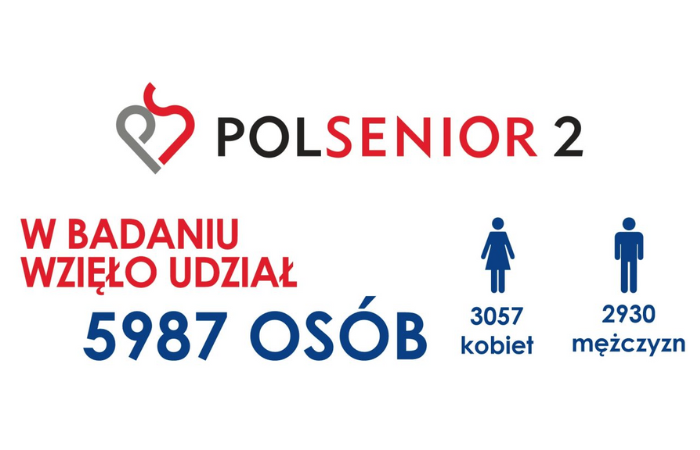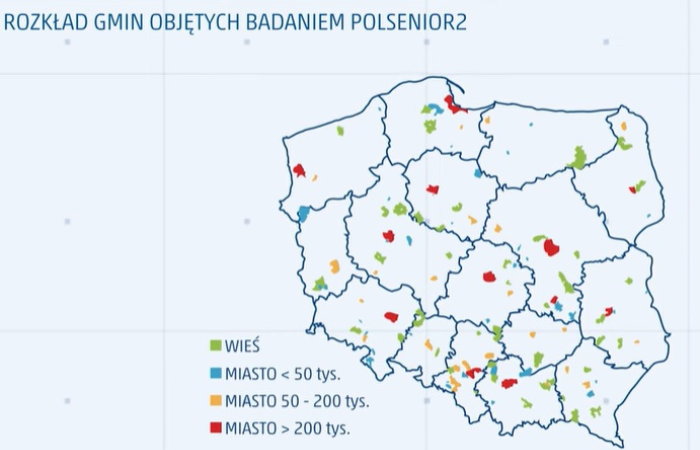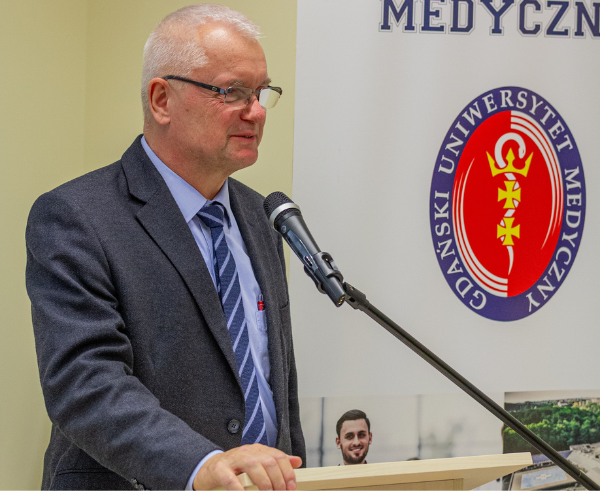Polish Population Health Research Laboratory
Division of Preventive Medicine & Education
Department of Hypertension & Diabetology
Faculty of Medicine
ABOUT US
The Laboratory specialising in health-related studies concerning Polish population is a unique unit, conducting population-based surveys covering a wide population throughout the country. The projects carries out by the Laboratory are the only initiatives of their kind in Central and Eastern Europe, and the unit’s activity consists of 25-30 years of knowledge and experience in running projects. The unit cooperates with clinical and research centers in both Poland, Europe and the USA.
OUR POTENTIAL
1. A survey of specific areas of health status of the elderly, including health-related quality of life – PolSenior2
2. Non-invasive monitoring in early detection of atrial fibrillation NOMED AF
3. Development and organization of screening, as well as local and nationwide epidemiological studies (including representative samples) to assess the prevalence and follow-up of prediabetes and diabetes
4. Analysis of epidemiological data on the prevalence of prediabetes and diabetes, their incidence, follow-up, coexistence of other disorders
5. Design and implementation of large population studies using the spatial structure of the Laboratory, using the example of the MOLTEST Kardio +
6. SOPKARD, the Sopot Heart Infarct and Cerebral Stroke Prevention Program directed initially (1999-2009) to all residents of Sopot, aged 30-50, and to young people of Sopot schools (SOPKARD-JUNIOR) in a later stage
7. Assessment of changes in accessibility to medical services in Poland for elderly people, during the COVID-19 pandemic period
8. UKCHASCAP (UK-China Health And Social Challenges Ageing Project: present and future burden of dementia, and policy responses)
9. Assessing the impact of long-term long-distance training on the health of men over 40 years of age
SCOPE OF SERVICES
1. Design and organization of prevention programs for type 2 diabetes and prediabetes, and analysis of epidemiological data on the prevalence of prediabetes and diabetes, their incidence, follow-up, coexistence of other disorders
2. Design and organization of local and nationwide epidemiological surveys (including representative samples) for the assessment of diabetes prevalence and follow-up
3. Cooperation with health care institutions, other scientific and research institutions and local government units in the foregoing area
4. Design and implementation of large population studies using the Laboratory’s infrastructure
5. Planning a nationwide epidemiological study (protocol, selection of research tools)
6. Drawing of a nationwide representative survey sample, with acquisition of respondents’ addresses
7. Implementation of epidemiological interviews in cross-sectional studies with follow-up surveys
8. Acquisition of data on medical events (e.g., deaths, hospitalizations)
9. Planning and implementation of biological specimen acquisition from respondents from all over Poland (venous blood, urine)
10. Design (including programming) of epidemiological models, in particular stochastic macrosimulation models
11. Conducting statistical analysis with report preparation based on large databases (e.g., containing more than 40 million cells)
12. Database management, which includes preparing for analysis by cleaning and maintaining data quality, merging collections, and data transformation.
13. Selection of appropriate methods for analysis and preparation of statistical reports, including tables, graphs, as well as summary and interpretation of results with hypothesis testing.
14. Conducting various types of significance tests, regression analysis, survival analysis, correlation analysis, etc. Population studies use a complex sample randomization and post-stratification
15. Negotiation of project contracts, contracts for medical and research experiments
16. Administration and management of research projects
17. Scientific activities in the field of health inequalities
RESEARCH TEAM
The research director is responsible for planning and supervising research projects, and is supported by a team of students, as well as laboratory and clinical personnel, the shape of which is adapted to current project needs.
The research team includes experienced diagnosticians/researchers:
- Prof. Tomasz Zdrojewski – coordinator of the Laboratory
- Dr. Habil. Piort Bandosz
- Dr. Habil. Anna Korzon-Burakowska
- Marcin Rutkowski, Ph.D.
- Agata Wojciechowska, Ph.D.
- Łukasz Wierucki, Ph.D.
- Adrian Stefański, Ph.D.
- Aleksandra Puch-Walczak, M.D.
- Aleksandra Undrunas, Ph.D.
- Kacper Jagiełło, M. Eng.
- Adrian Lange, M.D.
- Krzysztof Flis, M.D.
as well as outstanding experts from MUG and 8 leading medical universities and research institutes in Poland, who cooperate with us in the Scientific Committees of the aforementioned projects.
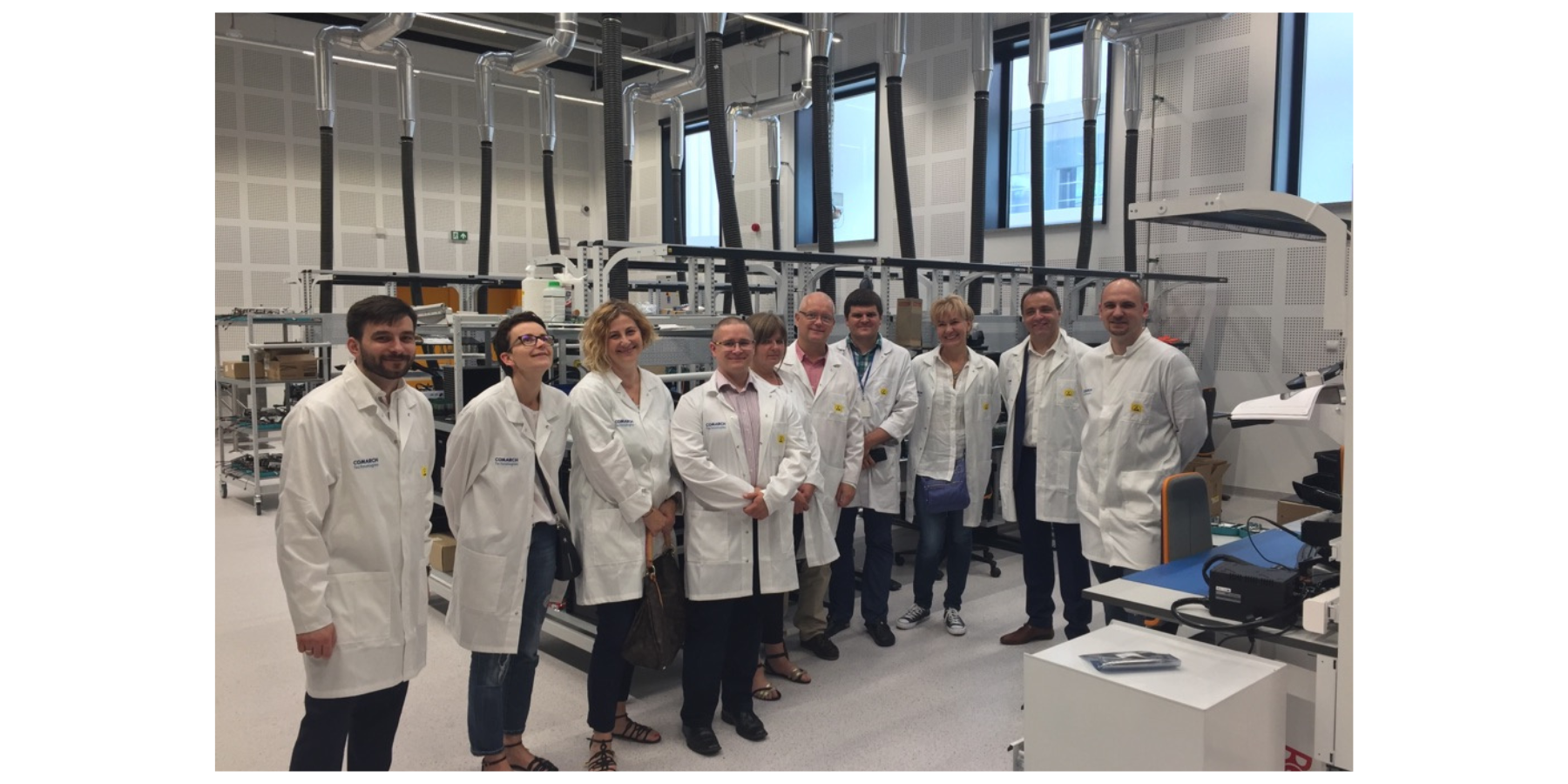
Experts of the Laboratory during a study visit to the laboratories of Comarch S.A. regarding the implementation of the NOMED-AF study.
For many years, the Division of Preventive Medicine & Education has not only been involved in the training of the future medical doctors in internal medicine, but also conducted and participated in numerous studies of specific areas of the health concerning Polish people and others.
For many years, we have put great effort into conducting health prevention research. We are proud to present our studies:
- Polsenior
- Polsenior2
- NOMED-AF
- SPOKARD
- NATPOL
- WOBASZ
- MOLTEST-KARDIO +
- badanie Maraton
- National Program for Equalization of Access to Prevention and Treatment of Cardiovascular Diseases – POLKARD, for 2017-2020
- Polish 400 Cities Project (Polski Projekt 400 Miast)
- Projekt EuroHeart II.
For our research projects, we have cooperated with many centers not only in the country, but also abroad. Thanks to our employees, we have been able to establish cooperation with many institutions:
- National Institute of Public Health – National Institute of Hygiene (NIZP PZH), Department of the Center for Monitoring and Analysis of Population Health Status
- University Hospital in Krakow – Department of Internal Medicine and Geriatrics
- Medical University of Warsaw, Department of Cardiology
- Pomeranian Medical University in Szczecin
- University of Liverpool, Department of Public Health and Policy
- Silesian Center for Heart Diseases
- Duke Clonical Research Institute, Department of biostatistics
- School of Public Health, Department of Biostatistics.
With the opportunities provided by the core facility activities, we are willing to offer numerous services to employees, doctoral students, as well as students, in the field:
- preparation of assumptions and conditions of the random sample of the epidemiological study, preparation of relevant applications to the institutions providing data,
- preparation of survey questionnaires and their testing for feasibility
- preparation of field study assumptions with feasibility assessment,
- interviews using the telephone method,
- creating databases in dedicated database systems to collect data obtained from the survey (eCRF),
- database management – linking databases, maintaining database quality, cleaning data, and preparing data for analysis,
- selecting appropriate statistical tools and creating a description of the methodology used in the analyses
- application of complex sample randomization and post-stratification in population studies
- preparation of statistical reports together with hypothesis testing and their interpretation (e.g. descriptive statistics, evaluation of data distribution, comparative analyses, significance tests, regression and correlation analysis),
- presentation of survey results in the form of tables or charts,
- organization and supervision of on-site and on-line trainings for project implementers,
- organization and supervision of conferences and webinars with project results
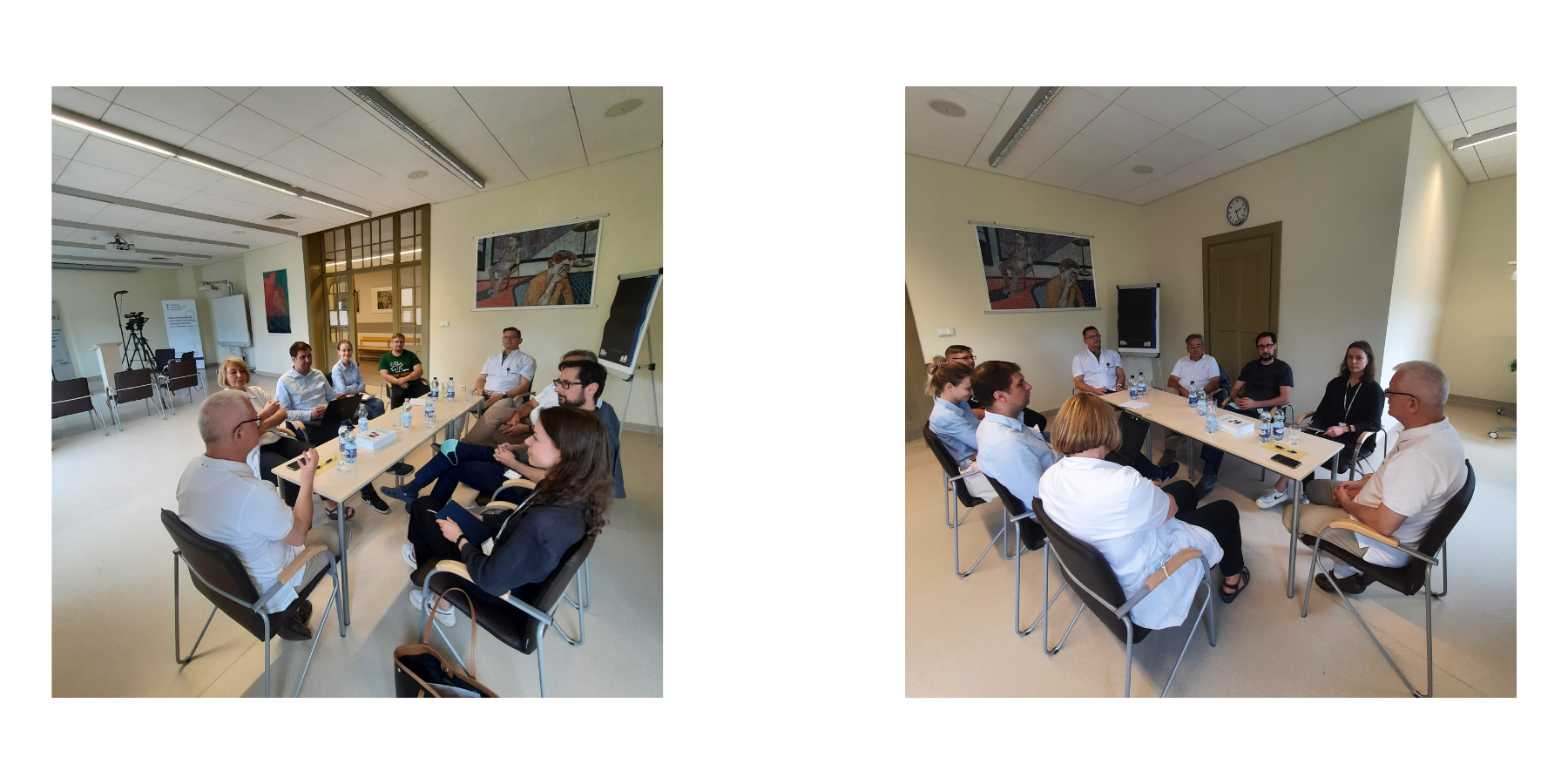
.
Our experienced team will try to support you at every step of the preparation, implementation, as well as analysis of the conducted research.
In addition, we also welcome cooperation related to developing medical simulations, preparation and training in advanced resuscitation, health prevention and hygiene classes for children and adolescents, production of teaching and instructional videos.
PUBLICATIONS
Based on the research results obtained by using the work, knowledge and experience of scientists from our Laboratory and the outstanding experts from Poland, Europe and the USA who cooperate with us, the following 73 publications have been produced recently, including:
1. Pharmacological Interactions in the Elderly, Błeszyńska E, Wierucki Ł, Zdrojewski T, Renke M.
2. Depressive symptoms and myocardial disease. Authors’ reply, Piwoński J, Piwońska A, Zdrojewski T, Cicha-Mikołajczyk A, Drygas W.
3. The burden of cardiovascular disease risk factors: A current problem, Pająk A, Jankowski P, Zdrojewski T.
4. The prevalence of dyspnea in the adult Polish population, Undrunas A, Bandosz P, Rutkowski M, Puch-Walczak A, Kuziemski K, Zdrojewski T.
5. Anthropometric Determinants of Respiratory Sinus Arrhythmia in Children, Lubocka P, Sabiniewicz R, Suligowska K, Zdrojewski T.
6. Differences in Symptomatology and Clinical Course of Acute Coronary Syndromes in Women ≤45 Years of Age Compared to Older Women, Bęćkowski M, Kowalik I, Jaworski K, Dąbrowski R, Gierlotka M, Gąsior M, Poloński L, Zdrojewski T, Karwowski J, Drygas W, Szwed H.
7. Factors Affecting Early Mortality and 1-Year Outcomes in Young Women With ST-Segment-Elevation Myocardial Infarction Aged Less Than or Equal to 45 Years, Bęćkowski M, Gierlotka M, Gąsior M, Poloński L, Zdrojewski T, Dąbrowski R, Kowalik I, Karwowski J, Drygas W, Szwed H.
8. The Prevalence of Anticitrullinated Protein Antibodies in Older Poles-Results from a Population-Based PolSenior Study, Chudek A, Kotyla P, Mossakowska M, Grodzicki T, Zdrojewski T, Olszanecka-Glinianowicz M, Chudek J, Owczarek AJ.
9. Factors influencing post-exercise proteinuria after marathon and ultramarathon races, Wołyniec W, Ratkowski W, Kasprowicz K, Małgorzewicz S, Aleksandrowicz E, Zdrojewski T, Wierucki Ł, Puch-Walczak A, Żmijewski P, Renke M.
10. Polypharmacy among elderly patients in Poland: prevalence, predisposing factors, and management strategies, Błeszyńska-Marunowska E, Jagiełło K, Grodzicki T, Wierucki Ł, Sznitowska M, Kalarus Z, Renke M, Mitręga K, Rewiuk K, Zdrojewski T.
11. Blood pressure and cholesterol control in the general population. Authors’ reply Niklas A, Pająk A, Kozela M, Marcinkowska J, Zdrojewski T, Drygas W, Piwońska A, Bielecki W, Kozakiewicz K, Tykarski A.
12. Obesity in Caucasian Seniors on the Rise: Is It Truly Harmful? Results of the PolSenior2 Study Puzianowska-Kuznicka M, Kurylowicz A, Wierucki L, Owczarek AJ, Jagiello K, Mossakowska M, Zdrojewski T, Chudek J.
13. Ten-year changes in adherence to a healthy lifestyle: the results of the WOBASZ surveys. Kwaśniewska M, Pikala M, Aranowska A, Bielecki W, Kozakiewicz K, Pająk A, Tykarski A, Zdrojewski T, Nadrowski P, Piwoński J, Drygas W.
14. Management and predictors of clinical events in 75 686 patients with acute myocardial infarction, Jankowski P, Topór-Mądry R, Gąsior M, Cegłowska U, Gierlotka M, Kubica J, Kalarus Z, Lesiak M, Wojakowski W, Legutko J, Sierpiński R, Zdrojewski T, Pinkas J, Kaźmierczak J, Mitkowski P, Witkowski A.
15. Prevalence of hypokalemia in older persons: results from the PolSenior national survey. Adamczak M, Chudek J, Zejda J, Bartmańska M, Grodzicki T, Zdrojewski T, Wiecek A.
16. Metabolic syndrome – a new definition and management guidelines A joint position paper by the Polish Society of Hypertension, Polish Society for the Treatment of Obesity, Polish Lipid Association, Polish Association for Study of Liver, Polish Society of Family Medicine, Polish Society of Lifestyle Medicine, Division of Prevention and Epidemiology Polish Cardiac Society, Club 30 Polish Cardiac Society, and Division of Metabolic and Bariatric Surgery Society of Polish Surgeons. Dobrowolski P, Prejbisz A, Kuryłowicz A, Baska A, Burchardt P, Chlebus K, Dzida G, Jankowski P, Jaroszewicz J, Jaworski P, Kamiński K, Kapłon-Cieślicka A, Klocek M, Kukla M, Mamcarz A, Mastalerz-Migas A, Narkiewicz K, Ostrowska L, Śliż D, Tarnowski W, Wolf J, Wyleżoł M, Zdrojewski T, Banach M, Januszewicz A, Bogdański P.
17. Patterns of multimorbidity in 4588 older adults: implications for a nongeriatrician specialist. Piotrowicz K, Pac A, Skalska A, Mossakowska M, Chudek J, Zdrojewski T, Więcek A, Grodzicki T, Gąsowski J.
18. Socioeconomic correlates and biochemical profiles of smokers in Poland: a cross-sectional study. Zagożdżon P, Zarzeczna-Baran M, Jędrusik P, Pierucka M, Bandosz P, Wojtecka A, Jędrzejczyk T, Popowski P, Gaciong Z, Zdrojewski T.
19. Prevalence of self‑reported heart failure in the adult Polish population: results of the NATPOL 2011 study, Puch-Walczak A, Bandosz P, Grodzicki T, Gaciong Z, Solnica B, Hoffman P, Zdrojewski T.
20. Assessment of quality of care of patients with ST-segment elevation myocardial infarction. Hudzik B, Budaj A, Gierlotka M, Witkowski A, Wojakowski W, Zdrojewski T, Gil R, Legutko J, Bartuś S, Buszman P, Dudek D, Gąsior M.
21. Predicting Silent Atrial Fibrillation in the Elderly: A Report from the NOMED-AF Cross-Sectional Study. Mitrega K, Lip GYH, Sredniawa B, Sokal A, Streb W, Przyludzki K, Zdrojewski T, Wierucki L, Rutkowski M, Bandosz P, Kazmierczak J, Grodzicki T, Opolski G, Kalarus Z.
22. Prevalence and risk factors of untreated thyroid dysfunctions in the older Caucasian adults: Results of PolSenior 2 survey. Kocełak P, Mossakowska M, Puzianowska-Kuźnicka M, Sworczak K, Wyszomirski A, Handzlik G, Stefański A, Zdrojewski T, Chudek J.
23. The necessity of prevention and treatment in the population of adolescents based on a comprehensive health assessment: the SOPKARD-Junior study Suligowska K, Czarniak P, Pakalska-Korcala A, Drewek K, Sabiniewicz R, Maj A, Król E, Zdrojewski T.
24. Serum Uric Acid Is a Weak Independent Predictor of Overall Survival in Older Adults. Winder M, Owczarek AJ, Mossakowska M, Holecki M, Broczek K, Grodzicki T, Zdrojewski T, Chudek J.
25. Impact of COVID-19 pandemic on acute heart failure admissions and mortality: a multicentre study. Kubica J, Ostrowska M, Stolarek W, Kasprzak M, Grzelakowska K, Kryś J, Kubica A, Adamski P, Podhajski P, Navarese EP, Anielska-Michalak E, Brycht O, Curzytek A, Dudek A, Gromadziński L, Grzelakowski P, Kamiński L, Kleinrok A, Kostkiewicz M, Koziński M, Król P, Kulawik T, Minczew G, Mindykowski M, Pawlak A, Prokopczuk J, Skonieczny G, Sobkowicz B, Sowiński S, Stankala S, Szymański P, Wester A, Wilczewski P, Bartuś S, Budaj A, Gąsior M, Gruchała M, Drożdż J, Jaguszewski M, Jankowski P, Legutko J, Lesiak M, Leszek P, Mitkowski P, Nessler J, Tomaszuk-Kazberuk A, Tycińska A, Zdrojewski T, Kaźmierczak J.
26. The level of knowledge of diabetic prevention in Poland – is there a phenomenon of pluralistic ignorance? Pawlak-Sobczak K, Drygas W, Kwaśniewska M, Dziankowska-Zaborszczyk E, Pająk A, Kozakiewicz K, Zdrojewski T, Rutkowski M, Tykarski A, Bielecki W.
27. Health status and its socio-economic covariates in the older population in Poland – the assumptions and methods of the nationwide, cross-sectional PolSenior2 survey. Wierucki Ł, Kujawska-Danecka H, Mossakowska M, Grodzicki T, Błędowski P, Chudek J, Kostka T, Więcek A, Hajduk A, Bandosz P, Zagożdżon P, Wojtyniak B, Zdrojewski T.
28. Prevalence, symptom burden and under-diagnosis of chronic obstructive pulmonary disease in Polish lung cancer screening population: a cohort observational study. Undrunas A, Kasprzyk P, Rajca A, Kuziemski K, Rzyman W, Zdrojewski T.
29. Effectiveness and safety of PCSK9 inhibitor therapy in patients with familial hypercholesterolemia within a therapeutic program in Poland: Preliminary multicenter data. Chlebus K, Cybulska B, Dobrowolski P, Romanowska-Kocejko M, Żarczyńska-Buchowiecka M, Gilis-Malinowska N, Stróżyk A, Borowiec-Wolna J, Pajkowski M, Bobrowska B, Rajtar-Salwa R, Kwapiszewska A, Waluś-Miarka M, Chmara M, Gałąska R, Małecki M, Zdrojewski T, Gruchała M.
30.Physical Activity versus Selected Health Behaviors, Subjective Physical and Psychological Health and Multimorbidity in a Large Cohort of Polish Seniors during the COVID-19 Pandemic. Szychowska A, Zimny-Zając A, Dziankowska-Zaborszczyk E, Grodzicki T, Drygas W, Zdrojewski T.
31. Metformin and cardiac injury after acute coronary syndrome in diabetic patients with no history of cardiovascular disease: data from the PL-ACS registry, Wróbel M, Rokicka D, Zdrojewski T, Gierlotka M, Gąsior M, Strojek K.
32. Prevalence, characteristics, and prognostic implications of type 2 diabetes in patients with myocardial infarction: the Polish Registry of Acute Coronary Syndromes (PL‑ACS) annual 2018 report, Niedziela JT, Hiczkiewicz J, Kleinrok A, Pączek P, Leszek P, Lelonek M, Rozentryt P, Parma Z, Witkowski A, Bartuś S, Zdrojewski T, Buszman P, Kaźmierczak J, Strojek K, Gąsior M.
33. Depression and smoking – widespread health problems among 14-year-old adolescents in Poland. The results of the SOPKARD-Junior survey. Pakalska-Korcala A, Suligowska K, Wolańczyk T, Zdrojewski T.
34. Is neural network better than logistic regression in death prediction in patients after ST-segment elevation myocardial infarction? Niedziela JT, Cieśla D, Wojakowski W, Gierlotka M, Dudek D, Witkowski A, Zdrojewski T, Lesiak M, Buszman P, Gąsior M.
35. Increase in the prevalence of metabolic syndrome in Poland: comparison of the results of the WOBASZ (2003-2005) and WOBASZ II (2013-2014) studies. Rajca A, Wojciechowska A, Śmigielski W, Drygas W, Piwońska A, Pająk A, Tykarski A, Kozakiewicz K, Kwaśniewska M, Zdrojewski T.
36. Prevalence of atrial fibrillation in the 65 or over Polish population. Report of cross-sectional NOMED-AF study. Kalarus Z, Średniawa B, Mitręga K, Wierucki Ł, Sokal A, Lip G, Bandosz P, Stokwiszewski J, Boidol J, Zieleniewicz P, Rutkowski M, Kaźmierczak J, Opolski G, Grodzicki T, Zdrojewski T.
37. Observed and relative survival and 5-year outcomes of patients discharged after acute myocardial infarction: the nationwide AMI-PL database, Wojtyniak B, Gierlotka M, Opolski G, Rabczenko D, Ozierański K, Gąsior M, Chlebus K, Wierucki Ł, Rutkowski D, Dziełak D, Poloński L, Zdrojewski T.
38. The effectiveness of atrial fibrillation identification using non-invasive long-term ECG monitoring system. Mitrega K, Sredniawa B, Sokal AYH, Lip G, Rewiuk K, Rutkowski M, Zdrojewski T, Grodzicki T, Kazmierczak J, Opolski G, Kalarus Z, Streb W.
39. Relationship between diabetes mellitus and atrial fibrillation prevalence in the Polish population: a report from the Non-invasive Monitoring for Early Detection of Atrial Fibrillation (NOMED-AF) prospective cross-sectional observational study, Gumprecht J, Lip GYH, Sokal A, Średniawa B, Mitręga K, Stokwiszewski J, Wierucki Ł, Rajca A, Rutkowski M, Zdrojewski T, Grodzicki T, Kaźmierczak J, Opolski G, Kalarus Z.
40. Prevalence and socioeconomic predictors of diagnosed and undiagnosed diabetes in oldest-old and younger Caucasian seniors: results from the PolSenior study. Puzianowska-Kuźnicka M, Januszkiewicz-Caulier J, Kurylowicz A, Mossakowska M, Zdrojewski T, Szybalska A, Skalska A, Chudek J, Franek E.
41. Parafunctions, Signs and Symptoms of Temporomandibular Disorders (TMD), in Children with Attention-Deficit Hyperactivity Disorder (ADHD): the results of the SOPKARD-Junior study. Suligowska K, Mikietyńska M, Pakalska-Korcala A, Wolańczyk T, Prośba-Mackiewicz M, Zdrojewski T.
42. Association between cardiovascular diseases and depressive symptoms in adults. A pooled analysis of population-based surveys: WOBASZ, NATPOL 2011, and WOBASZ II_. Piwoński J, Piwońska A, Zdrojewski T, Cicha-Mikołajczyk A, Rutkowski M, Bandosz P, Stokwiszewski J, Pająk A, Tykarski A, Kozakiewicz K, Bielecki W, Drygas W.
43. _Prevalence of cardiometabolic risk factors and selected cardiovascular diseases in hypertensive and normotensive participants in the adult Polish population: The WOBASZ II study. Niklas A, Marcinkowska J, Kozela M, Pająk A, Zdrojewski T, Drygas W, Piwońska A, Bielecki W, Kozakiewicz K, Tykarski A.
44. Comparison of reorganized versus unaltered cardiology departments during the COVID-19 era: a subanalysis of the COV-HF-SIRIO 6 study. Ostrowska M, Kasprzak M, Stolarek W, Grzelakowska K, Kryś J, Kubica A, Adamski P, Podhajski P, Navarese EP, Anielska-Michalak E, Matuszewska-Brycht O, Curzytek A, Dudek A, Gromadziński L, Grzelakowski P, Kamiński L, Kleinrok A, Kostkiewicz M, Koziński M, Król P, Kulawik T, Minczew G, Mindykowski M, Pawlak A, Prokopczuk J, Skonieczny G, Sobkowicz B, Sowiński S, Stankala S, Szymański P, Wester A, Wilczewski P, Bartuś S, Budaj A, Gajda R, Gąsior M, Gruchała M, Drożdż J, Jaguszewski M, Jankowski P, Legutko J, Lesiak M, Leszek P, Mitkowski P, Nessler J, Tomaszuk-Kazberuk A, Tycińska A, Zdrojewski T, Kaźmierczak J, Kubica J.
45. Managed Care after Acute Myocardial Infarction (MC-AMI) – Poland’s nationwide program of comprehensive post-MI care improves prognosis in 2-year follow-up. A single high-volume center intention-to-treat analysis. Kułach A, Wilkosz K, Wybraniec M, Wieczorek P, Gąsior Z, Mizia-Stec K, Wojakowski W, Zdrojewski T, Wojtyniak B, Gąsior M, Wita K.
46. The national burden of frailty and disproportionate distribution of its components-the predominance of slow gait speed: a 2018-19 face-to-face epidemiologic assessment representative of population of older Poles. Piotrowicz K, Kujawska-Danecka H, Jagiełło K, Hajduk A, Skalska A, Mossakowska M, Zdrojewski T, Grodzicki T, Gąsowski J.
47. Dietary Antioxidants, Quality of Nutrition and Cardiovascular Characteristics among Omnivores, Flexitarians and Vegetarians in Poland-The Results of Multicenter National Representative Survey WOBASZ. Kwaśniewska M, Pikala M, Grygorczuk O, Waśkiewicz A, Stepaniak U, Pająk A, Kozakiewicz K, Nadrowski P, Zdrojewski T, Puch-Walczak A, Tykarski A, Drygas W.
48. Prevalence of diabetes and impaired fasting glucose in Poland in 2005-2014: results of the WOBASZ surveys, Rutkowski M, Wojciechowska A, Śmigielski W, Drygas W, Piwońska A, Pająk A, Tykarski A, Kozakiewicz K, Waśniewska MK, Zdrojewski T.
49. Is there a common latent cognitive construct for dementia estimation across two Chinese cohorts? Liu Y, Wu Y, Cai J, Huang Y, Chen Y, Venkatraman TM, Lobanov-Rostovsky S, Bandosz P, Yang YJ, Wu YT, Liao J, Hao Y, Brunner EJ.
50. What will the cardiovascular disease slowdown cost? Modelling the impact of CVD trends on dementia, disability, and economic costs in England and Wales from 2020-2029. Collins B, Bandosz P, Guzman-Castillo M, Pearson-Stuttard J, Stoye G, McCauley J, Ahmadi-Abhari S, Araghi M, Shipley MJ, Capewell S, French E, Brunner EJ, O’Flaherty M.
51. MRI-Derived Subcutaneous and Visceral Adipose Tissue Reference Values for Children Aged 6 to Under 18 Years. Marunowski K, Świętoń D, Bzyl W, Grzywińska M, Kaszubowski M, Bandosz P, Khrichenko D, Piskunowicz M.
52. Reference values for MRI-derived psoas and paraspinal muscles and macroscopic fat infiltrations in paraspinal muscles in children. Marunowski K, Świętoń D, Bzyl W, Grzywińska M, Bandosz P, Khrichenko D, Piskunowicz M.
53. Universal or targeted cardiovascular screening? Modelling study using a sector-specific distributional cost effectiveness analysis. Collins B, Kypridemos C, Cookson R, Parvulescu P, McHale P, Guzman-Castillo M, Bandosz P, Bromley H, Capewell S, O’Flaherty M.
54. Potential impact of diabetes prevention on mortality and future burden of dementia and disability: a modelling study_. Bandosz P, Ahmadi-Abhari S, Guzman-Castillo M, Pearson-Stuttard J, Collins B, Whittaker H, Shipley MJ, Capewell S, Brunner EJ, O’Flaherty M.
55. StrokeCog Markov Model: Projected Prevalent and Incident Cases of Stroke and Poststroke Cognitive Impairment to 2035 in Ireland. Sexton E, Donnelly NA, Merriman NA, Hickey A, Wren MA, O’Flaherty M, Bandosz P, Guzman-Castillo M, Williams DJ, Horgan F, Pender N, Feeney J, de Looze C, Kenny RA, Kelly P, Bennett K.
56. Potential impacts of post-Brexit agricultural policy on fruit and vegetable intake and cardiovascular disease in England: a modelling study. Seferidi P, Laverty AA, Collins B, Bandosz P, Capewell S, O’Flaherty M, Millett C, Pearson-Stuttard J.
57. Modelling tool to support decision-making in the NHS Health Check programme: workshops, systematic review and co-production with users. O’Flaherty M, Lloyd-Williams F, Capewell S, Boland A, Maden M, Collins B, Bandosz P, Hyseni L, Kypridemos C.
58. Aortic stiffness is not only associated with structural but also functional parameters of retinal microcirculation. Dąbrowska E, Harazny JM, Miszkowska-Nagórna E, Stefański A, Graff B, Kunicka K, Świerblewska E, Rojek A, Szyndler A, Gąsecki D, Wolf J, Gruchała M, Laurent S, Schmieder RE, Narkiewicz K.
59. Impact of type 1 diabetes and its duration on wall-to-lumen ratio and blood flow in retinal arterioles. Stefański A, Wolf J, Harazny JM, Miszkowska-Nagórna E, Wolnik B, Murawska J, Narkiewicz K, Schmieder RE.
60. The role of genetic factors and monocyte-to-osteoclast differentiation in the pathogenesis of Charcot neuroarthropathy. Kloska A, Korzon-Burakowska A, Malinowska M, Bruhn-Olszewska B, Gabig-Cimińska M, Jakóbkiewicz-Banecka J.
61. Microbiological, Clinical and Radiological Aspects of Diabetic Foot Ulcers Infected with Methicillin-Resistant and -Sensitive Staphylococcus aureus. Stańkowska M, Garbacz K, Korzon-Burakowska A, Bronk M, Skotarczak M, Szymańska-Dubowik A.
62. Polypharmacy in Polish Older Adult Population-A Cross-Sectional Study: Results of the PolSenior Project. Neumann-Podczaska A, Tobis S, Antimisiaris D, Mossakowska M, Puzianowska-Kuznicka M, Chudek J, Wierucki L, Merks P, Wizner B, Sobieszczanska M, Niemir ZI, Kaczmarek B, Wieczorowska-Tobis K.
63. Prevalence of Hyperuricemia and the Use of Allopurinol in Older Poles-Results from a Population-Based PolSenior Study. Winder M, Owczarek AJ, Mossakowska M, Broczek K, Grodzicki T, Wierucki Ł, Chudek J.
64. Capping or Suctioning for Tracheostomy Decannulation. Tretiakow D, Springer J, Skorek A.
65. Does the choice of drug in pharmacologic cardioversion correlate with the guidelines? Systematic review. Springer J, Szmuda T, Kozłowski D.
66. The Brief Assessment of Cognition in Affective Disorders – Novel Tool Is the Neuropsychological Assessment in Mood Disorders – Polish Translation. Cubała WJ, Włodarczyk A, Szarmach J, Kiwnik-Dahm A, Milska-Musa KA, Jakuszkowiak-Wojten K, Springer J.
67. Decline in mortality from coronary heart disease in Poland after socioeconomic transformation: modelling study. Bandosz P, O’Flaherty M, Drygas W, et al. Br Med J. 2012;344:d8136. doi:10.1136/bmj.d8136
68. Potential impact of diabetes prevention on mortality and future burden of dementia and disability: a modelling study. Bandosz P, Ahmadi-Abhari S, Guzman-Castillo M, et al. Diabetologia. 2020;63(1):104-115. doi:10.1007/s00125-019-05015-4
69. Temporal trend in dementia incidence since 2002 and projections for prevalence in England and Wales to 2040: modelling study. Ahmadi-Abhari S, Guzman-Castillo M, Bandosz P, et al. Bmj-Br Med J. 2017;358:j2856. doi:10.1136/bmj.j2856
70. “Forecasted trends in disability and life expectancy in England and Wales up to 2025: a modelling study”https://pubmed.ncbi.nlm.nih.gov/28736759/. Guzman-Castillo M, Ahmadi-Abhari S, Bandosz P, et al. Lancet Public Health. 2017;2(7):e307-e313. doi:10.1016/S2468-2667(17)30091-9
71. Reducing US cardiovascular disease burden and disparities through national and targeted dietary policies: A modelling study. Pearson-Stuttard J, Bandosz P, Rehm CD, et al. Plos Med. 2017;14(6):e1002311. doi:10.1371/journal.pmed.1002311
72. Exploring potential mortality reductions in 9 European countries by improving diet and lifestyle: A modelling approach. O’Flaherty M, Bandosz P, Critchley J, et al. Int J Cardiol. 2016;207:286-291. doi:10.1016/j.ijcard.2016.01.147
73. A victory for statins or a defeat for diet policies? Cholesterol falls in Poland in the past decade: A modeling study. Bandosz P, O’Flaherty M, Rutkowski M, et al. Int J Cardiol. 2015;185:313-319. doi:10.1016/j.ijcard.2015.03.079
CONTACT

Polish Population Health Research Laboratory
Division of Preventive Medicine & Education
Medical University of Gdańsk
Dębinki 7 St.
80-211 Gdańsk
Prof. Tomasz Zdrojewski
monika.trochim@gumed.edu.pl

SECRETARIAT
Monika Trochim, M.A.
Phone 58 349 19 75
Mail monika.trochim@gumed.edu.pl
photo Paweł Sudara/MUG & private archive

